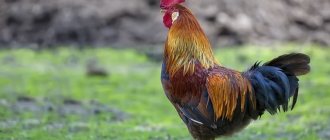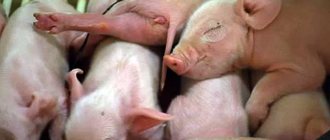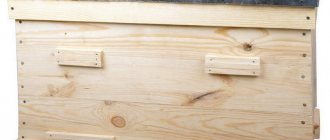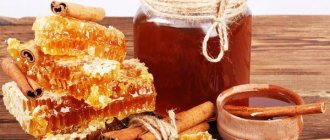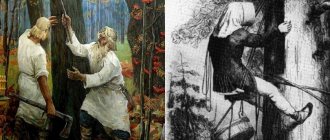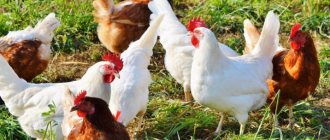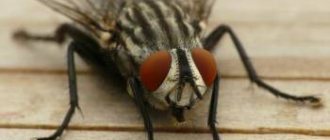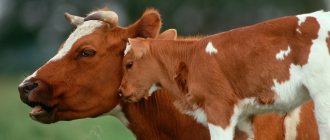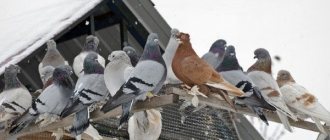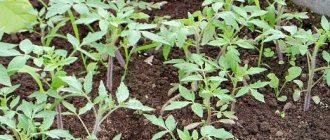Amount of honey for a certain time
Naturally, the volume of honey brought depends on many factors - conditions in a particular season, the number of flower stalks, the breed of bees, the health of the apiary, and so on. But, despite this, there are average indicators that make it possible to estimate how much honey can be obtained from one hive per season and for the calendar year as a whole.
How much honey per season?
To get the average nominal amount of honey in kilograms that can be obtained during the flowering season, you need to know:
- Number of hives in the apiary.
- Number of frames in each hive. From one frame you get an average of 1 to 1.5 kg of sweet delicacy. So the house will weigh as much as the number of filled frames it contains.
By multiplying the number of kilograms of honey the hive produces by the number of available houses, you can get the approximate amount of sweet nectar that the beekeeper will be able to collect from his apiary.
How much honey per year
To calculate the amount of harvest per year, it is necessary to multiply the volume of honey from one hive per season, starting from the moment of the first pumping until the moment when the bees go to winter. For example, during a season, on average, it is possible to collect about 40 kg of honey, while in a year this figure almost doubles and can reach 75-80 kg.
Averages
On average, one bee produces 5 grams of honey over the course of its life—just 1 teaspoon. At the same time, a large healthy bee colony is capable of collecting approximately 150 kilograms over the summer. This applies to families of up to 50 thousand individuals.
The amount of honey is influenced by many factors. The collection process itself looks like this:
Factors that influence the honey harvest
Of course, there is a whole list of factors that directly affect how much honey a beekeeper will collect from one hive and apiary as a whole in a calendar year and during the high season. The most intensively influencing include:
- Climatic features of the season. This includes air temperature indicators and how early spring comes and how late autumn begins.
- What food supply is chosen for the apiary. So, what the bees collect honey from influences. This could be a garden and vegetable garden, or the organization of nomadic beekeeping. In this case, harvesting will be carried out from those plants that are accessible to insects.
- The beekeeping region as a whole. It is important to understand that in the southern regions the honey collection season has been extended due to a longer flowering period. Therefore, there will always be more bribes and they will be spread out over time, compared to the middle zone, and even more so to the northern regions.
- Directly the health of the insects themselves. The family must be strong, have sufficient food supplies and conditions for reproduction. In addition, the beekeeper must take all measures to prevent the development of fungal infections and parasites in the house.
- In addition to all the above factors, how much honey an apiary produces depends heavily on the selected breed of bees .
How to increase apiary productivity
To increase productivity during the day and the summer as a whole, you need to apply the following methods:
- Place houses in places where the food supply is strongest.
- To contribute in every possible way to the growth of the family and its strengthening. To do this, under unfavorable conditions, it is necessary to feed the insects with additional fertilizers.
- At the first sign of infection, take immediate measures to eliminate the problem.
- Control the amount of brood. Leave the amount of honey that will satisfy the needs of the insects themselves.
Interesting Facts
To get a gram of honey, you need 2 grams of nectar. To obtain 30 grams of product, which is equal to a spoon, you need to collect 60 grams of nectar. A worker bee takes 30 milligrams of nectar per bribe. Therefore, to get a spoonful of honey, she needs to make 2 thousand bribes.
A bee usually makes 10 flights per day. This means that 200 insects must work all day to collect a spoonful of sweetness. Moreover, such productivity is characteristic only of strong families. Bees from such families begin honey collection in the morning and stop late in the evening. Sometimes they work even in cloudy weather and during rain. The productivity of weak families is 3 times lower.
Honey volumes depending on location
Naturally, in Russia, as in other countries of the world, there are regions where beekeeping and beekeeping are strongest. This is due not only to traditions and cultural characteristics, but, first of all, to favorable conditions and a strong food supply. Accordingly, the amount of harvest in each area will vary greatly.
Regions of Russia
On the territory of Russia, in different regions, they collect, as a rule, from 6 to 18 kg of honey for sale. The most honey-rich regions can be considered Tatarstan, Bashkortostan, Altai, Primorye, Krasnodar, and Rostov region. In a year, beekeepers here receive up to 50 kg - this is the amount of sweet nectar produced by one hive.
In Ukraine
In Ukraine there is some distribution, in terms of varietal and honey, and territorial division. So, there is the following predisposition:
- This is how the buckwheat variety is harvested in the central and western parts of the country.
- In the eastern and southern territories, sunflower and acacia honey are most often extracted.
- The maximum yield is observed in the forest-steppe zone, where rapeseed, buckwheat, and linden grow. The average from one hive is up to 16 kg per season.
On the territory of the Republic of Belarus
In the country, an average of 14 kg of sweet bee nectar is obtained from 1 bee house.
The influence of bee breed on the amount of honey
It is important for a new beekeeper to choose the right breed of bees. This determines how much honey can be collected from one hive per season and for the whole year.
Here are the most popular among beekeepers in different regions:
- Bee Karpatka behaves well in central Russia, as well as in the southern regions of the country. It has high productivity of queens and good feeding of new offspring. In addition, these insects are distinguished by their calm nature. But there are also some negative features. Carpathian moths are highly compatible with wax moths, so the beekeeper needs to be prepared to fight the pest. It is not very winter-hardy. For this reason, it is not often found in regions with harsh winters.
- Central Russian species of bees suitable not only for the European part of Russia, but also for regions of Siberia, where frosts in winter are quite severe. The bee is more active, therefore it effectively protects its home, in comparison with the Carpathian one. It also effectively resists the appearance of various types of diseases. And easily adapts to any climatic conditions. But, it is worth keeping in mind that she prefers to collect honey from honey plants such as buckwheat and linden. Therefore, the beekeeper will have to take care of the presence of these plants in close proximity to the apiary. In addition, inspecting a hive of the Central Russian breed of bees is not so easy. She doesn't like unnecessary interference. Therefore, you will have to carry out intensive measures to neutralize and calm the insects in order to pump out the honey, or carry out parasitic measures.
- Bee Caucasian, as the name implies, is widespread in the Caucasus, and also loves the climatic features of the middle zone. Its distinctive feature is its ability to collect honey regardless of weather conditions. She is not afraid of cold temperatures and fogs. She will fly out to collect food even in light rain. In addition, its significant advantage is the ability to adapt to any food supply. Therefore, the beekeeper will not have to worry about what plants are near the apiary. But, a significant disadvantage of this breed is its poor adaptability to low temperatures in the winter months. It does not show aggression towards humans, but can attack its relatives.
- Another breed of bees is Karnika, which, like the Caucasian, prefers the middle zone and southern regions. It is unpretentious to various honey plants and economically uses the accumulated food supply. It should be used where it is possible to collect honeydew honey and a short-term honey collection.
Honey base and hive size
The closer the flower stalks are located, the less time and energy the bee spends when flying. For this reason, nomadic apiaries are considered the most profitable. In addition, hive size affects productivity. When there are a lot of flower stalks, it is optimal to use large houses that can accommodate up to 24 frames. However, such hives will be disadvantageous if the honey base is weak. Bees simply cannot fill all the empty honeycombs.
Based on the results of the clarified calculations of how much honey bees produce per season, the beekeeper analyzes his actions and finds out the reasons for the shortcomings. If errors are corrected correctly, you can expect more bribes for the next season, unless bad weather conditions interfere.
Source
Advice from experienced beekeepers
To increase the productivity of your apiary, you need to listen to the following advice from experienced beekeepers:
- Sow honey plants on a free plot of land. Sweet clover, clover or milk thistle work great.
- In addition to the availability of food supply, it is important to exclude the presence of pesticides on plants. Therefore, you should not use such drugs either on your own property or try to avoid their appearance among your neighbors. If this cannot be excluded, it is advisable to take the apiary for a certain period of time to another territory, which will be environmentally more favorable and friendly to insects.
- It is important to bring free frames into the hive on time. This expands the space for increasing the amount of collected honey.
- It is important to monitor the health of the bee colony. At the first signs of the appearance of a disease, viral or fungal infection, as well as parasites, take urgent measures to eliminate them. Moreover, it is necessary to isolate this house, in which signs of illness have appeared, from others in order to prevent infection of all the plastic.
- Even better is to carry out preventive measures.
- Always remember that insects should spend the winter comfortably. To do this, they insulate the houses and replenish food supplies, providing not only honey, but not bee bread.
Considering these recommendations, it is easy to improve the operation of the apiary, collect a large amount of honey and increase revenue from the activity.
What to do if there are no honey plants nearby?
In search of food, bees can cover distances of up to 8 km in one direction, always accurately finding the way to the house. However, such a load negatively affects honey production, so you need to try to ensure that the distance between the hive and the honey plantation does not exceed 2 km.
If there is no suitable site nearby, and a nomadic apiary is not considered as an alternative option, you can prepare food for the bee colony yourself by sowing annual or perennial herbaceous plants suitable for collecting nectar and pollen on your own site or on any accessible territory.
Best suited for this purpose:
- fireweed (Ivan-tea angustifolia);
- common toadflax;
- clover;
- cornflower;
- dandelion officinalis;
- alfalfa;
- sainfoin;
- motherwort;
- psoralea stone fruit;
- rapeseed;
- burdock;
- sage;
- catnip;
- meadow rank;
- yellow clover;
- horned frog;
- weeping grass;
- peas (thin-leaved or mouse);
- camel-thorn.
